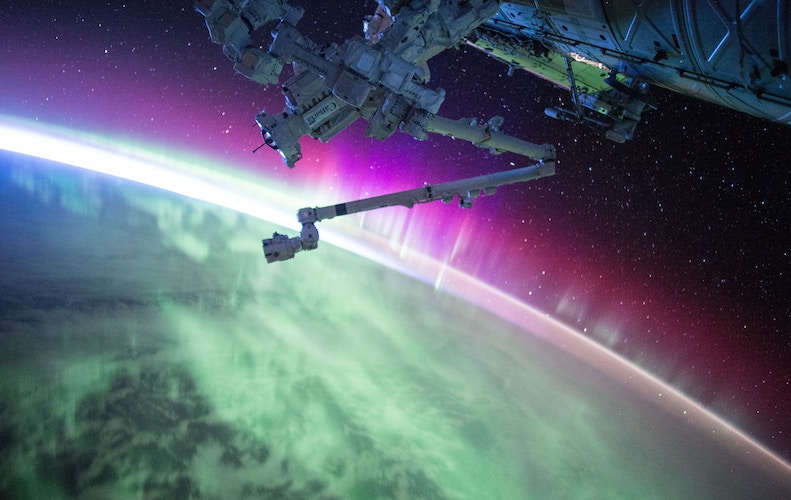Scientific Progress
Episode #9 of the course How science works by Benjamin Keep
Welcome back.
Today, we continue to look at science in broad terms. Sure, a single scientist can use a model, tweak an instrument, and make an argument. But what about the course of scientific development over decades and generations?
Scientific progress seems self-evident. Hey, 17th century—y’all got cars? No? Case closed.
The question, however, isn’t so much whether our scientific theories appear to be stronger and our technology more powerful. It’s how. Our initial model of science proposed a linear view of scientific progress: We just keep learning more, our theories just keep getting better, and we accumulate more scientific knowledge. We keep getting more “right.” Kepler’s theory of planetary motion was great; Newton’s theory of gravity, however, could explain everything that Kepler’s theory could explain, plus more. Newton’s theory of gravity was great; Einstein’s theory of relativity could explain everything Newton’s could, plus more. But this “smooth,” linear account of science has been challenged by historical evidence.
Hmm … That’s Weird
Thomas Kuhn, a philosopher of science who introduced the word “paradigm” into everyday language, saw scientific progress as coming in two kinds of phases. Under “normal science,” scientists apply known practices to known problems. Both the problems and the ways that scientists go about solving them form a “paradigm.”
You might compare it to doing algebra. We know how to isolate variables to solve equations, apply the quadratic formula, and use other estimation methods to solve for unknown variables. But we still have to do the work of solving the problem. Both the problem—“solving equations for unknowns”—and the ways of solving the problem—techniques for isolating and estimating variables—come together to form a package.
After solving many problems, at some point, a “crisis” emerges that makes scientists critical of the current paradigm and open to a new one. The crisis, as Kuhn describes it, is the accumulation of unexplained things that make you go, Hmm, that’s weird.” By the end of the 1800s, a number of these “hmm, that’s weird” moments cropped up in physics. Mercury’s orbit couldn’t be predicted accurately. Experiments with light suggested that light always seems to have the same speed, regardless of our reference point. These anomalies put strain on the current “web of belief” that scientists had. Finally, a new paradigm emerges that packages its own problems, concepts, and scientific techniques together to resolve this anomaly.
In most cases, Kuhn suggests, what Popper might call “falsification” events are viewed by scientists as within reasonable boundaries for error. A crisis only occurs when influential members of the community become dissatisfied with the power of prevailing ideas to explain and predict anomalies.
Science as Measurement
Kuhn’s ideas led science scholars to become more interested in studying “science as practiced” than studying how science could (or should) work in principle. I have already mentioned several ideas that have come out of this “practice turn”: how scientists use models productively, how instruments mediate research and “hold” knowledge, and historical research into the development of research styles. The last major perspective that we’ll look at comes from another scientist-turned-philosopher, Andrew Pickering, who examined the development of particle physics.
Science, according to Pickering, is much more like talking to an alien than like watching a TV show. A realist might view scientists as reporters: They are watching the TV and telling the rest of us what’s on. A relativist might view scientists as, perhaps, well-meaning confabulists, who watch TV and act like they’re telling the rest of us what’s on but are actually telling us what’s in their own minds.
Pickering rejects both of these ideas. From his perspective, scientific research is evolutionary: It’s a dialogue between scientists and the natural world whose course can’t be predicted beforehand. Nature doesn’t just lie there, inert. Its answers depend upon how the question is asked. And it’s often a rather recalcitrant conversational partner—it “resists.” Scientists need to constrain the natural world in an artificial way so they can assign values to outcomes (by making elaborate apparatuses, developing statistical techniques, etc.). The “trick” of science is not in the manipulation of variables, it’s in the creation and evolution of the meaning of those variables over time. Scientists, in other words, need to first operationalize variables so they can be manipulated. It’s the job of the scientist to wrangle natural phenomena into a structure that can be meaningfully interrogated.
Next time: science as a strategy and parting thoughts.
Questions to ponder
How likely is the history of science an indicator of the future of science? In other words, can we know how science progresses?
Recommended book
The Structure of Scientific Revolutions by Thomas S. Kuhn
Share with friends

